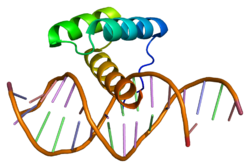History
Dental anthropology has been a research topic of great interest for investigating tooth development evolution. The variations in number, size, and morphology of teeth among populations have been able to provide insights for genetic basis of odontogenesis. [1] The origins of teeth is believed to have come from dermal structures called "odontodes," which became associated with bones. [1] Phylogenetic changes in teeth has been associated with functional adaptation. [1] The reduction of teeth number has been connected with the decrease size of the jaw in human expansion. [1] Monkeys, apes, great apes, and homo sapiens were studied and it showed that homo sapiens have acquired a shorter maxillo-mandibular skeleton when compared to their ancestors. [1]
The first set of maxillary lateral incisors (primary teeth) develop between the 14th and the 16th week, while being inside the uterus. [2] By the age of 8 or 9, the permanent maxillary lateral incisors erupt as the root continues to mineralize until the age of 11 years old. [2]
Applications
Because MLIA can be detected from partial skeletal remains, it is useful in the field of anthropology. Anthropologically-interesting human remains often have relatively well preserved skeletons, but no soft tissues or intact DNA. This makes it hard to determine relationships between the deceased individuals. MLIA is sometimes related to inbreeding, so the presence of MLIA in many members of a large collection of remains can indicate that the population that lived there was relatively inbred. This technique has been used to study a group of Neolithic farmers. [8]
Non-metric morphological traits, also known as epigenetic or anatomical variants, are a great tool for detecting individuals who are genetically related in historic populations if DNA is not well preserved. [7] The method used is non-metric cranial and dental traits, which has already been tested on several burial sites. [7] Identifying individuals who are genetically related from past populations is very important in order to determine if the families share a number of characteristics and phenotypical traits. [7] Traits that are used for kinship analysis must be determine by genetic factors, must be rare in the general population, and the individual traits must be genetically independent from each other. [7] The traits that are closely examined include: anatomical variants of tooth crowns and roots; shape, size, number, structure, and position of the teeth. [7]
This page is based on this
Wikipedia article Text is available under the
CC BY-SA 4.0 license; additional terms may apply.
Images, videos and audio are available under their respective licenses.

